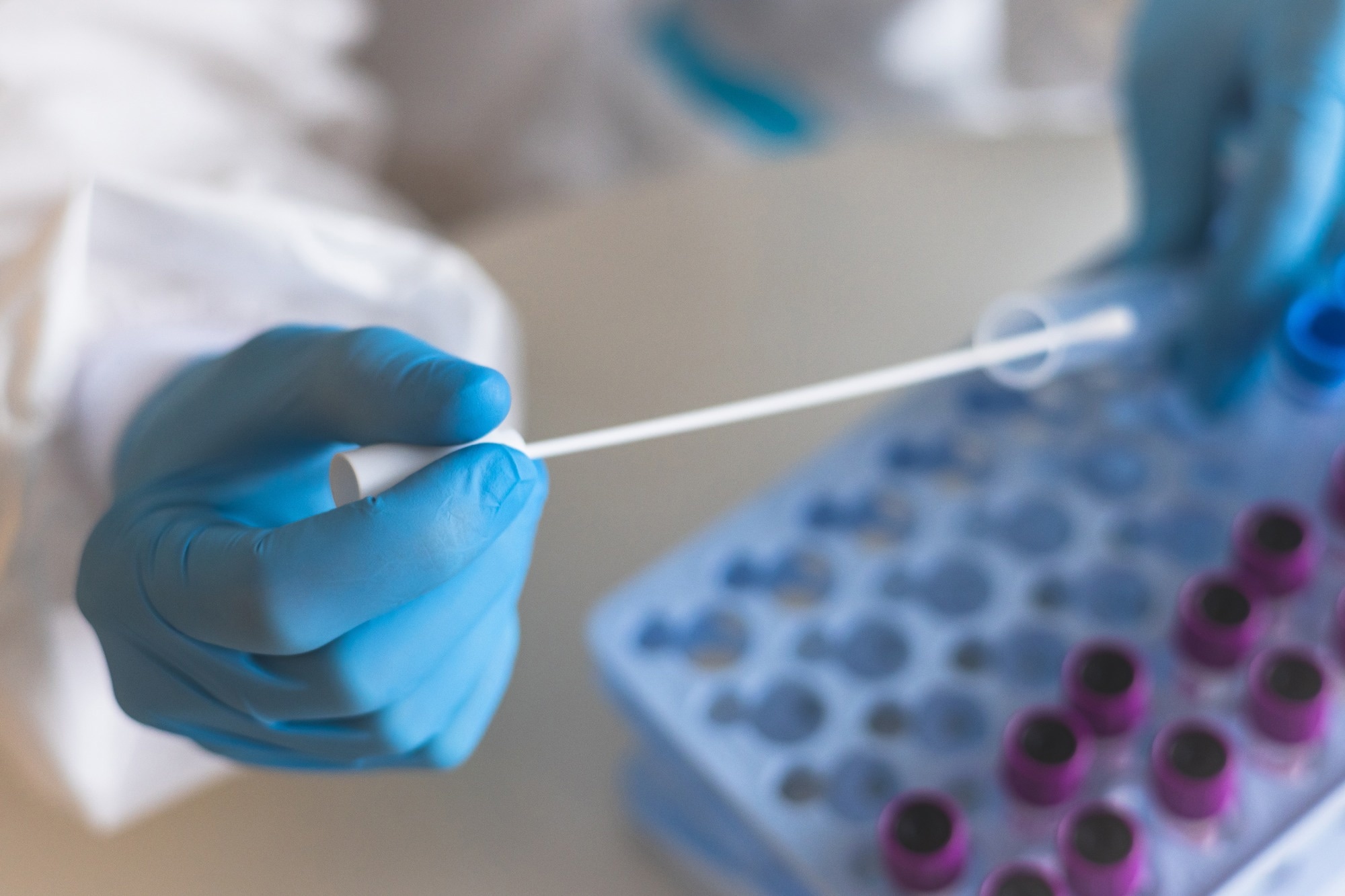cheapest viagra soft au next day

In a recent study published in The Journal of Infectious Diseases, researchers examined the response of alveolar type II (ATII) pneumocytes to tumor necrosis factor alpha (TNF-α) and Bruton tyrosine kinase (BTK) during coronavirus disease 2019 (COVID-19) pneumonia.
 Study: The Defenders of the Alveolus Succumb in COVID-19 Pneumonia to SARS-CoV-2 and Necroptosis, Pyroptosis, and PANoptosis. Image Credit: Tsuguliev/Shutterstock.com
Study: The Defenders of the Alveolus Succumb in COVID-19 Pneumonia to SARS-CoV-2 and Necroptosis, Pyroptosis, and PANoptosis. Image Credit: Tsuguliev/Shutterstock.com
Background
Although the rapid development of vaccines has limited the morbidity and mortality associated with severe acute respiratory syndrome coronavirus 2 (SARS-CoV-2) infections, the COVID-19 pandemic is in its third year, and the disease has claimed close to seven million lives from with COVID-19 pneumonia and other associated comorbidities.
Moreover, danger du viagra the elderly population and individuals with comorbidities remain at risk with the emergent immune evading variants of SARS-CoV-2.
The development of effective treatments to prevent severe COVID-19 is based on understanding the underlying mechanisms in the progression of COVID-19 pneumonia.
The current approach aims to treat COVID-19 pneumonia in two stages, with antiviral treatments in the first stage targeting the SARS-CoV-2 infection-induced destruction of the alveolar pneumocytes and the second stage comprising inflammation-inhibitors to suppress the hyperinflammatory responses.
Treating COVID-19 pneumonia, the second stage of the treatment necessitates a detailed understanding of hyperinflammatory lung injury mechanisms, especially the roles of TNF-α and BTK.
About the study
In the present study, the researchers focused on the impact of TNF-α and BTK on ATII cells, which are called the defenders of the alveolus. Since ATII cells also proliferate and differentiate to replace the alveolar type I (ATI) cells lost during lung injury or infection, which are then cleared through apoptosis when a patent functional alveolus is restored for gas exchange.
The reparative process involving ATII cells also indicates that for the SARS-CoV-2 infection to progress to COVID-19 pneumonia, SARS-CoV-2 can significantly reduce the ATII cell population by increasing viral replication in many susceptible cells.
Therefore, the researchers believed that investigating the impact of TNF-α and BTK on ATII cells would provide insights into the underlying mechanisms of hyperinflammation in COVID-19 pneumonia.
The study was based on autopsy lung tissue samples from patients who succumbed to the disease during Italy's first wave COVID-19 pandemic. The immunohistochemical analyses were conducted using deparaffinized tissue sections rehydrated and treated with various antibodies, including interferon, interleukins, BTK, and TNF-α.
Additionally, the ribonucleic acid (RNA) of SARS-CoV-2 was visualized using RNAscope in situ hybridization. In contrast, the virions and the intracellular viral RNA were visualized using the same method but with a different fluorescence agent.
Results
The results reported that during COVID-19 pneumonia, ATII cells, whether uninfected or infected with SARS-CoV-2, succumb to necroptosis induced by TNF-α, pyroptosis induced by BTK, and PANoptosis — a hybrid inflammatory death cell form where distinctive pathologies related to COVID-19 are generated in ATII cells by a PANoptosomal latticework.
The SARS-CoV-2 replication and viral production are amplified in the adjacent ATII cells that line the alveoli, and the reparative response of the ATII cells also destroys infected and uninfected cells.
Furthermore, the adjacent ATII cells fuse to form syncytia and multinucleated giant cells, which are histopathological features found in COVID-19 pneumonia.
The PANoptosis concept is based on pharmacological, biochemical, and genetic evidence of various components interacting within a molecular complex to mediate necroptosis, apoptosis, and pyroptosis.
The PANoptosomal latticework has now been identified as the cellular structure that induces the necroptosis of the uninfected and SARS-CoV-2 infected ATII cells and pyroptosis induced by BTK.
Additionally, while the SARS-CoV-2 RNA was at detectable levels during late-stage pneumonia, the levels of SARS-CoV-2 RNA were greatly reduced in comparison to early-stage pneumonia.
However, despite many of the ATII cells being uninfected during late-stage pneumonia, the TNF-α-induced necroptosis, which is mediated by the PANoptosomal latticework, caused the loss of infected and uninfected ATII cells.
The distinct cytopathology of COVID-19 pneumonia is created by the reparative process of ATII cells, which fills the alveoli with ATII cells that fuse and amplify.
Conclusions
Overall, the findings indicated that the reparative response of ATII pneumocytes causes these cells to succumb to necroptosis and pyroptosis induced by TNF-α and BTK, respectively, which is mediated by a PANoptosomal latticework, which drives the distinctive COVID-19 pneumonia cytopathology in these adjacent ATII cells.
These results highlight the need for incorporating TNF-α and BTK inhibitors with the early antiviral treatment to prevent the clearance of uninfected ATII cells, reduce the associated hyperinflammation, and restore alveoli function in individuals with COVID-19 pneumonia.
Schifanella, L. et al. (2023) "The Defenders of the Alveolus Succumb in COVID-19 Pneumonia to SARS-CoV-2 and Necroptosis, Pyroptosis, and PANoptosis", The Journal of Infectious Diseases, 227(11), pp. 1245-1254. doi: 10.1093/infdis/jiad056. https://academic.oup.com/jid/article/227/11/1245/7068922?login=false
Posted in: Medical Science News | Medical Research News | Medical Condition News | Disease/Infection News
Tags: Antibodies, Apoptosis, Cell, Coronavirus, covid-19, Fluorescence, Genetic, Hybridization, Infectious Diseases, Inflammation, Interferon, Intracellular, Kinase, Mortality, Necroptosis, Necrosis, Pandemic, Pneumonia, Respiratory, Ribonucleic Acid, RNA, SARS, SARS-CoV-2, Severe Acute Respiratory, Severe Acute Respiratory Syndrome, Syndrome, Tumor, Tumor Necrosis Factor, Tumor Necrosis Factor Alpha, Tyrosine
.jpg)
Written by
Dr. Chinta Sidharthan
Chinta Sidharthan is a writer based in Bangalore, India. Her academic background is in evolutionary biology and genetics, and she has extensive experience in scientific research, teaching, science writing, and herpetology. Chinta holds a Ph.D. in evolutionary biology from the Indian Institute of Science and is passionate about science education, writing, animals, wildlife, and conservation. For her doctoral research, she explored the origins and diversification of blindsnakes in India, as a part of which she did extensive fieldwork in the jungles of southern India. She has received the Canadian Governor General’s bronze medal and Bangalore University gold medal for academic excellence and published her research in high-impact journals.
Source: Read Full Article